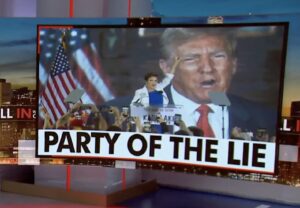
When you make purchases through our links we may earn a small commission.

Photo Credit: Joshua Rondeau
Put It On Your Wall: CanvasOnDemand.com
Support thesmokingchair.com through Patreon.
In recent years, the rising costs of higher education have become a cause for concern, not only for students and their families but also for the broader economy. While the inflation rate has been a persistent issue, the inflated costs of a college education are increasingly recognized as a silent contributor to the larger inflation problem. This article delves into how the skyrocketing expenses associated with pursuing higher education are intricately linked to the broader economic challenge of inflation.
Tuition Fees
The most glaring aspect of the higher education inflation dilemma is the skyrocketing tuition fees. Over the past few decades, the cost of attending college has outpaced the rate of inflation by a significant margin. Universities and colleges have hiked tuition fees to cover increasing administrative costs, faculty salaries, and investments in campus infrastructure. As these costs rise, institutions often pass the burden onto students, exacerbating the financial strain on families.
Student Loans and Debt
The reliance on student loans to finance higher education has reached alarming levels. The ever-growing student debt crisis not only burdens recent graduates but also contributes to the broader economic instability. As graduates enter the workforce saddled with significant debt, they may delay major life decisions such as buying a house, starting a family, or investing in other areas of the economy. The collective impact of delayed economic participation can contribute to a sluggish economy and further exacerbate inflationary pressures.
Inflation in the Education Sector
The inflation within the education sector is not limited to tuition fees alone. Textbooks, housing, and other essential amenities on college campuses have seen a notable uptick in costs. These ancillary expenses, when combined with tuition fees, create a substantial financial barrier for students seeking a higher education. The rising costs of living within the college environment contribute to the inflationary pressures faced by students and their families.
Wage Stagnation
While education costs continue to surge, wage growth has failed to keep pace. The gap between the rising expenses of a college education and the relatively stagnant income levels has widened, placing an undue burden on families. As a result, individuals and families may resort to borrowing or utilizing credit, contributing to an increase in overall debt levels, which in turn can fuel inflation.
Ripple Effect on the Economy
The inflated costs of higher education have a ripple effect on the broader economy. As student debt rises and graduates struggle to make ends meet, the potential for a reduced consumer spending capacity increases. This, in turn, can impact various sectors of the economy, from real estate to consumer goods, ultimately influencing the inflation rate.
Extravagant Construction Projects: A Distorted Priority
A notable and often overlooked contributor to the inflated costs of higher education is the trend of universities and colleges investing exorbitant sums of money in opulent construction projects that seem disconnected from the core mission of education. These multi-million dollar projects, which include state-of-the-art athletic facilities, luxurious student centers, and lavish administrative buildings, can play a significant role in driving up overall education expenses.
While the pursuit of excellence in campus facilities is understandable, the question arises as to whether these extravagant projects align with the primary goal of providing quality education. Critics argue that such projects, driven by the desire for prestige and competitiveness among institutions, divert funds away from academic priorities, contributing to the financial strain felt by students.
The funding for these projects often comes from a variety of sources, including tuition increases, private donations, and, in some cases, public funding. As universities engage in a race to build the most impressive facilities, students bear the brunt of the financial burden through increased tuition and fees. This diversion of funds toward non-educational ventures can be seen as a misallocation of resources, further widening the gap between educational costs and the economic realities faced by students and their families.
Moreover, the construction boom may not only contribute to higher costs but also create an environment where institutions prioritize appearances over substance. The emphasis on amenities and aesthetics may overshadow the fundamental educational mission, potentially impacting the quality of education provided.
In light of the rising costs of education, it is crucial for stakeholders, including university administrators and policymakers, to critically assess the necessity and impact of these extravagant construction projects. Redirecting resources towards educational priorities and ensuring financial transparency can play a vital role in aligning the financial investments of institutions with the true mission of higher education, thereby addressing one of the less conspicuous yet significant contributors to the inflationary pressures on the education sector.
The Last Word
The soaring costs of higher education are more than a burden on students and their families—they are a systemic issue that contributes to the inflation problem. Addressing the root causes of this issue, such as administrative bloat, the student debt crisis, and the overall cost structure of higher education, is essential for mitigating the broader economic impact. Policymakers, educational institutions, and the private sector must work collaboratively to find sustainable solutions that make higher education more accessible and affordable, thus alleviating the hidden pressure on the nation’s inflationary woes.
You’ll get more articles like this – and our favorite promotional offers delivered straight to your inbox.
By submitting this form you agree to our terms and conditions. You can unsubscribe at any time.

🔥 Transparent Sheer Tops Try-On Haul | Camila Elle 🔥

Video: Mira Shape Knitted TRANSPARENT Try-On. YES or NO?


The Short-Term Appeal and Long-Term Risks of MAGA Policies

To ‘Drill, Baby, Drill’ Big Oil Is Saying ‘No, Thanks’

The D Files: Haley’s Role Model

Video: Mira Shape Knitted TRANSPARENT Try-On. YES or NO?


🔥 Transparent Sheer Tops Try-On Haul | Camila Elle 🔥


Video: Mira Shape Knitted TRANSPARENT Try-On. YES or NO?

To ‘Drill, Baby, Drill’ Big Oil Is Saying ‘No, Thanks’
















